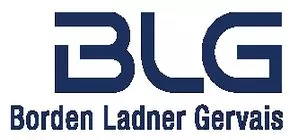- within Technology topic(s)
- with Senior Company Executives, HR and Finance and Tax Executives
- in United States
- with readers working within the Banking & Credit, Healthcare and Technology industries
This article is part of BLG's 12-part series: 12 Strategic Priorities for Privacy, Cybersecurity, and AI Risk Management. Designed for board members and executives, the series highlights key priorities for managing risk and driving innovation with confidence.
Artificial intelligence is no longer limited to technology teams: it has become a core part of corporate strategy and enterprise risk. As AI capabilities mature and spread across business functions, so too must decision-makers' oversight and accountability. Boards and executive teams that treat AI risk as an IT matter may find themselves unprepared for its enterprise-wide impact.
Why it matters
AI systems increasingly impact decision-making in high-stakes areas such as finance, employment, healthcare, and national infrastructure. Missteps can lead to discrimination claims, privacy violations, intellectual property disputes, and algorithmic opacity. Regulatory scrutiny is intensifying, with Canada's new Minister for AI hinting at introducing new legislation and several international regimes establishing transparency and auditability standards.
Stakeholders, from investors to customers, are asking hard questions about how AI is governed, and they are not satisfied with the "ethical AI" response. Instead, they expect boards to provide informed, proactive oversight.
What management and boards must prioritize
1. Board-level AI educationDirectors must be equipped to ask the right questions about AI systems. This means ongoing training and updates on technological, legal, and ethical developments. A well-informed board is essential to providing meaningful oversight.
2. Cross-functional governance frameworkAI governance must involve privacy, legal, HR, compliance, IT, and business units. Governance structures should define ownership, decision rights, escalation protocols, and reporting lines.
3. Procurement and vendor risk managementMany AI systems are procured through third-party tools. Boards must confirm that procurement processes include legal and ethical risk assessments, including obligations related to transparency, explainability, and data handling.
4. Auditability and accountabilityAI systems must be traceable. Boards should require documentation that enables internal and external audits. This includes understanding the training data, model updates, intended uses, and fallback procedures.
5. Clear leadership responsibilityWho owns AI risk? Boards must know which executive is responsible for AI governance — and how their performance is measured. This ownership should be supported by internal policies, KPIs, and accountability mechanisms.
Final thoughts
Responsible AI governance starts at the top. Boards must go beyond vision statements, and ensure there is an actionable strategy for managing AI risks and opportunities. Leadership requires structure, curiosity, and commitment, not just aspiration.
The content of this article is intended to provide a general guide to the subject matter. Specialist advice should be sought about your specific circumstances.


